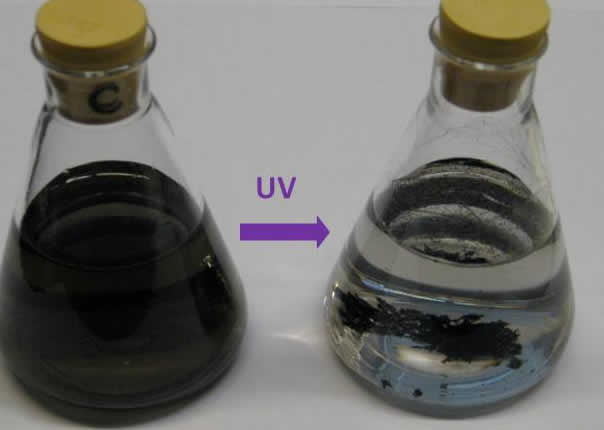Naturally occuring transformations of carbon nanotubes (CNTs) in the environment are likely to be dominated by abiotic oxidative andextracellular microbial processes.To address this we are studying the photochemical mediated transformations that occur to colloidal andCNTs immobilized in polymer composites. Our approach is to identify transformation products, reaction kinetics, and reaction mechanisms. Initial studies on oxidized multi-walled CNTs have revealed that colloidal particles aggregate as a result of exposure to UVA irradiation (Figure – right) and we are currently exploring the physicochemical changes that accompany this process using a combination of analytical techniques that includes UV-Vis, DLS, Raman, TEM and X-ray Photoelectron Spectroscopy. For CNT-polymer composites, we are studying photochemical induced transformations of thecomposites, as well as determining if and under what conditions CNTs are released from composites. This work is being conducted in collaboration with Professor Chad Jafvert and Tim Filley at Purdue as well as Professor Jim Ranville at the Colorado School of Mines.

Exposure of colloidally stable oxidized multi-walled CNTs to 254nm UV irradiation leads to particle aggregation.